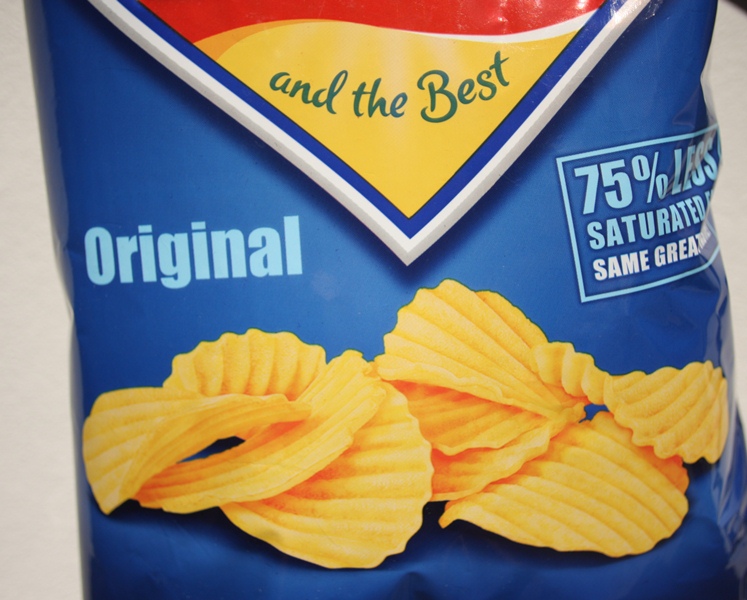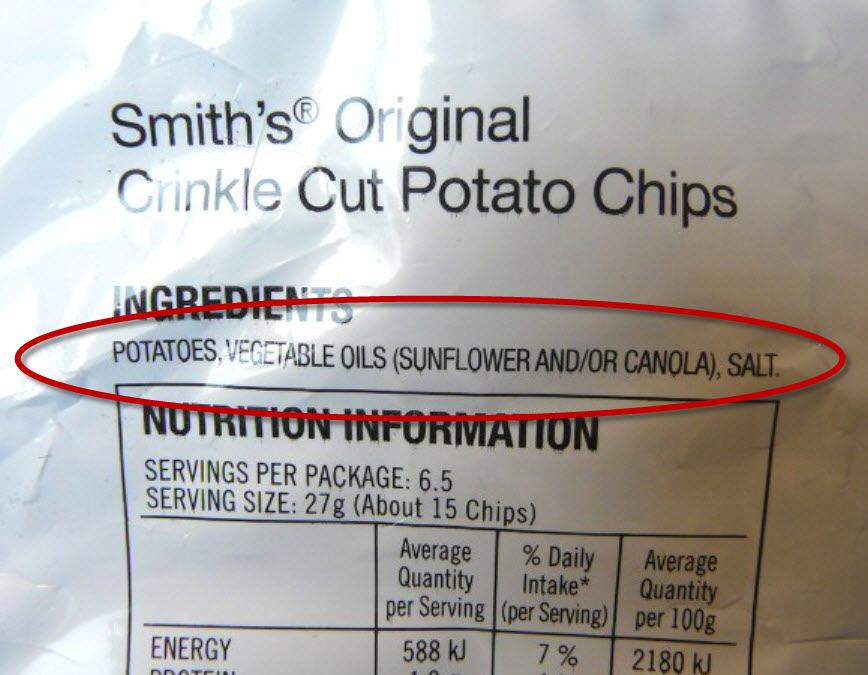- Home
- Blog
- Additives and Labels
- 4-step guide to avoiding additives
4-step guide to avoiding additives
Written by Catherine Saxelby
on Wednesday, 01 February 2012.
Tagged: additives, colours, food labels, guides, healthy eating, label, meal planning, preservatives, technology

Are you suspicious of additives with their long, strange chemical names and code numbers? Well maybe you should be. Not just because some are considered harmful but because additives are usually indicators that a food is over-processed, cheap and manufactured. The stuff that keeps forever in your cupboard!
Don’t misunderstand me, additives don't automatically mean a food is unhealthy - excess fat, salt and sugar also do that. But additives do flag that the food is mass-produced and has a long shelf life made possible by the use of emulsifiers, stabilisers, flavour enhancers, acidity regulators and preservatives.
So if you're serious about avoiding preservatives, colours, flavour enhancers and similar chemicals, scanning the label for numbers just isn’t enough. Here's my 4-step guide to doing the job right ...
Step 1. Steer clear of things in packets
Avoid buying supermarket products that have a long list of ingredients with lots of additive chemical names or code numbers. Usually these include foods such as cordial, soft drinks, snack foods or noodles that are flavoured (e.g. nacho cheese, French onion, BBQ, chicken), soup mixes, simmer sauces, salad dressings, meal bases, coloured lollies (M&Ms, Smarties, snakes, jellies), supermarket biscuits, muesli bars, cake mixes and instant puddings.
Step 2. Cook from scratch
Cook from scratch using basic ingredients like meat, fish, fresh vegetables, fresh or dried herbs, oil, flour or cream for thickening instead of using convenience mixes or flavour bases. Make your own stock, chutney, pasta tomato sauce, pesto, salad dressings, marinades and you’re sure to consume no additives. If you’ve got the time and energy.
For example, here’s how my Mum made clear beef broth which she used to prepare when we kids were unwell. She also added it as stock in soups and her favourite Beef Stroganoff.
She threw an onion, a turnip and a carrot into a large soup pot along with celery tops, a handful of parsley and a slab of gravy beef or cheap chuck steak. Then she covered it all with cold water and threw in some whole black peppercorns and a good pinch of salt. It was slowly simmered for an hour or two then strained through a fine sieve.
I could follow this time-consuming method or opt for the modern speedy equivalent – the stock cube – made from reconstituted powders plus MSG, vegetable protein extracts, dehydrated vegetables, maltodextrin, flavours and flavour enhancers, ingredients you won’t find in the average kitchen. Some cubes don’t even contain beef!
Step 3. Know the numbers
Read the ingredient list on the back for additives, don’t just believe the claims on the front. Get familiar with the code numbers of the harmful ones that are a potential problem for you. This is generally a short list of the following which you can print out and carry with you:
9 colours
| 102 | Tartrazine - yellow |
| 104 | Quinoline - yellow |
| 110 | Sunset yellow FCF |
| 122 | Azorubine or carmoisine - red |
| 127 | Erythrosine - red (now limited to maraschino cherries) |
| 129 | Allura red AC |
| 132 | Indigotine or indigo carmine - blue |
| 133 | Brilliant blue FCF |
| 160b | Annatto or norbixin - yellow/orange |
2 sulphur preservatives (mainly in wine, pickled onions and dried apricots/apples)
| 220 | Sulphur dioxide |
| 223 | Sodium metabisulphite |
3 preservatives (mainly in cordials, fruit drinks and fruit sauces)
| 211 | Sodium benzoate |
| 212 | Potassium benzoate |
| 282 | Calcium propionate (mould inhibitor in bread) |
3 flavour enhancers (mainly in savoury foods and Asian sauces)
| 621 | Monosodium glutamate (MSG) |
| 627 | Disodium 5’-diguanylate |
| 631 | Disodium 5’-inosinate |
Here’s the list of all the government-approved additives with their number codes from the food regulator FSANZ at www.foodstandards.gov.au. Read my overview of additives and why they’re used here.
Step 4. Eat the ‘Classics’
 Compare two products side by side and buy the one that has the shorter list of processed ingredients or the fewest additives on the label. Usually it’s the plain, unflavoured version. Often dubbed “Original” or “Classic”.
Compare two products side by side and buy the one that has the shorter list of processed ingredients or the fewest additives on the label. Usually it’s the plain, unflavoured version. Often dubbed “Original” or “Classic”.
For instance, take a look at my comparison of the ingredients in two variants of the same potato crisps made by the same manufacturer – the Original plain chips versus the Chicken flavoured chips. The Original has only three basic ingredients – potatoes, oil and salt. The Chicken variant has 17 ingredients made up of:
- The original three of potato, oil and salt
- 8 processed ingredients which are maltodextrin, added sugar, added flavours (unspecified), three flavour enhancers plus hydrolysed vegetable protein and yeast extract both of which act as flavour enhancers too
- 6 dried vegetables or herbs which are onion powder, garlic powder, dried parsley and sage, black pepper and turmeric.
- And NO chicken - as far as I can tell!

Smith's Original Chips:
3 ingredients
POTATO, VEGETABLE OIL, SALT
VS
Smith’s Chicken Potato Crisps:
17 ingredients
POTATO, VEGETABLE OIL, MALTODEXTRIN, SUGAR, FLAVOUR ENHANCERS (621, 635, 620), SALT, FLAVOURS, HYDROLYSED VEGETABLE PROTEIN, ONION POWDER, YEAST EXTRACT, GARLIC POWDER, HERBS (PARSLEY, SAGE), SPICES (BLACK PEPPER, TURMERIC)

Change is in the air
Most manufacturers are well aware of consumers’ anti-additive sentiments and have already swapped over to more 'natural' additives e.g. instead of Allura Red, you'll see beet extract or carotenes now on the list. Which is good news.
Of course, not all additives are 'bad'. Of the approx 300 approved additives in Australia and New Zealand, less than 20 are on the suspicious list and in common use. That's less than 7 per cent - which is pretty low.
FSANZ spells out which ones can be used, in which sort of foods and in what quantity. It's all laid out in the Food Standards Code. So while change is coming, albeit slowly, if you can or need to avoid additives, follow my steps to do it properly.
You may also be interested in...
About the Author
Catherine Saxelby has the answers! She is an accredited nutritionist, blogger and award-winning author. Her award-winning book My Nutritionary will help you cut through the jargon. Do you know your MCTs from your LCTs? How about sterols from stanols? What’s the difference between glucose and dextrose? Or probiotics and prebiotics? What additive is number 330? How safe is acesulfame K? If you find yourself confused by food labels, grab your copy of Catherine Saxelby’s comprehensive guide My Nutritionary NOW!
The Good Stuff
The Boring Stuff
© 2023 Foodwatch Australia. All rights reserved
Author photo by Kate Williams
Website by Joomstore eCommerce









